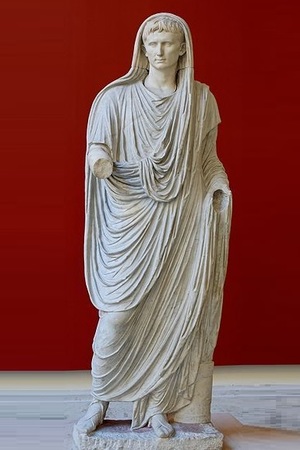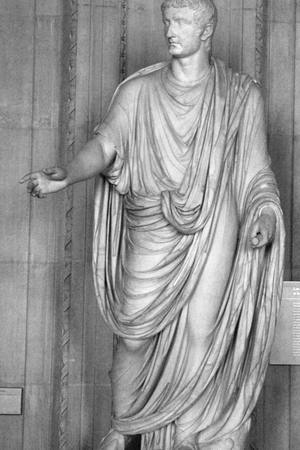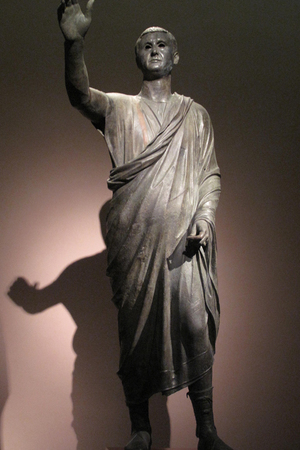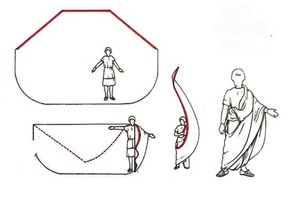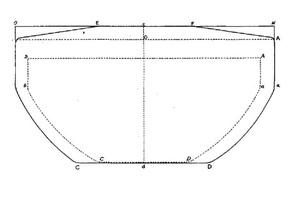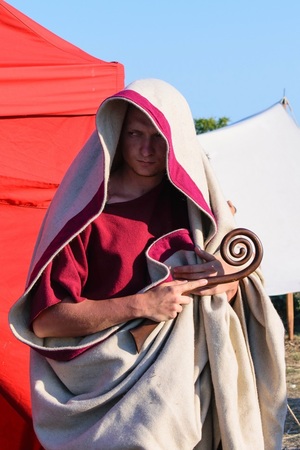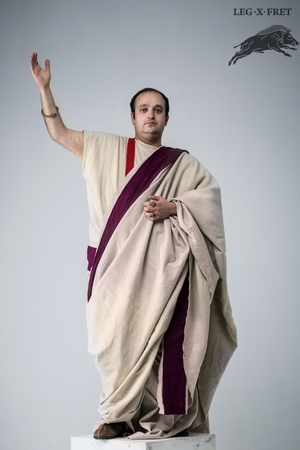Toga
A toga (Latin: toga) was a status symbol in ancient Rome, a broad and long piece of fabric worn over a tunic.
The toga was one of the attributes of Roman citizenship. Vergil referred to the Romans as "lords of the world, the people dressed in togas." Those deprived of citizenship and exiled lost the right to wear the toga, and it was also forbidden for foreigners to wear it. The toga was primarily formal attire for wealthy Roman citizens. Over time, fashion changed, and the toga became less commonly worn. For example, Juvenal mentioned that the toga was mainly worn only by the deceased on their deathbeds. Martial wrote that in small towns in Italy, the toga was worn once or twice a month, usually for family celebrations, mainly in honor of the Lares. In Rome itself, the tradition of wearing the toga was somewhat more enduring than in the outskirts of the state, but even so, by the late Republic, citizens increasingly preferred ordinary cloaks like the paenula and sagum over the toga. During Augustus' reign, aediles were tasked with maintaining Roman traditions, ensuring that every Roman citizen wore a toga in the forum and at the circus. However, even these measures were unsuccessful, and soon the toga was worn only where it was mandatory: at public games, in court, during sacrifices, and when clients greeted their patron. Thus, over time, the toga became official ceremonial attire and was rarely used in everyday life.
It should be noted that the toga likely entered Roman fashion from the Greeks, who used a similar garment, the himatium.
Several types of togas were known:
- Toga praetexta — A toga with broad red or purple stripes. This toga was worn by young free Roman minors, as well as magistrates and priests.
- Toga virilis — The toga a young Roman would wear during the ceremony marking his entry into civic adulthood.
- Toga pura — A plain white everyday toga made from heavy white wool without colored ornaments.
- Toga candida — A specially whitened toga worn by candidates for public office. The word "candidate" comes from this toga.
- Toga pulla — A gray or black toga worn by mourners during a period of mourning.
- Toga picta or toga palmata — A purple toga worn by a triumphator. It could be embroidered with gold depicting scenes from Roman history.
- Trabea — A toga decorated with horizontal purple stripes. Servius describes three types of trabea: entirely purple dedicated to the gods; a white and purple trabea worn by Latin and early Roman kings; and a purple and saffron-colored one with a purple border, worn by augurs, consuls during festivals, and equites during the transvectio.
Reconstruction
The toga was shaped like a rounded trapezoid and was truly enormous in size, often requiring the assistance of slaves to be put on. The fabric could be up to 2 meters wide at its widest point, and its length ranged from 3 to 10 meters, depending on the type of toga. The classic toga was white or cream-colored. To create the red or purple borders, it was common not to sew on a ribbon; instead, threads of a different color were woven directly during the weaving process.
Since the toga was worn by Roman citizens, it is best suited for the reconstruction of the images of senators and priests. It is recommended to use the thinnest wool with a plain weave for the toga, and the edges should be hemmed for a neater appearance.
Related Topics
Tunic, Augur, Pontifex, Equites - Riders, Paenula, Sagum
Literature
- Giro P. Private and Public Life of the Romans
- Sergeyenko M. Life of Ancient Rome

 Gallery
Gallery






